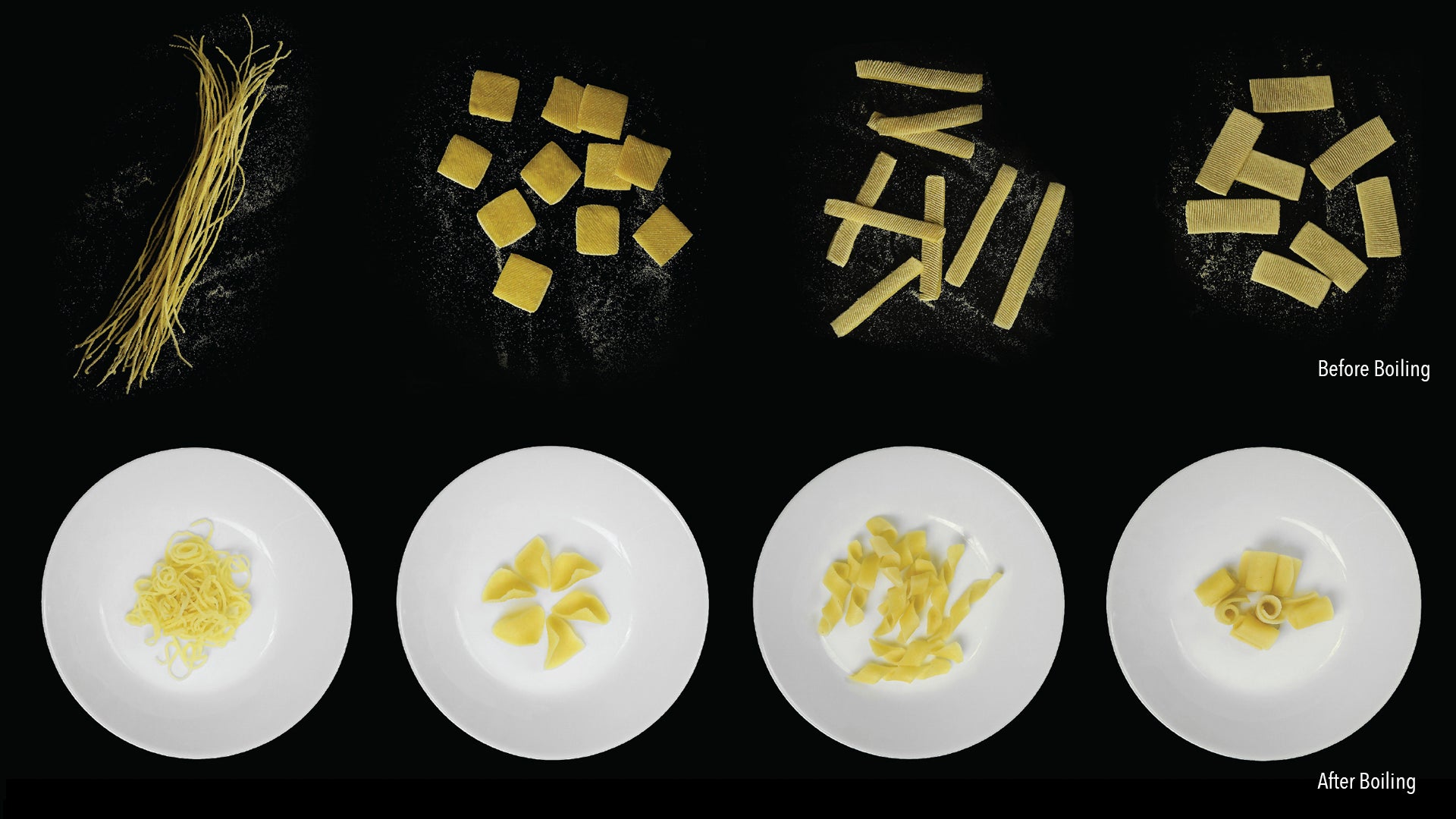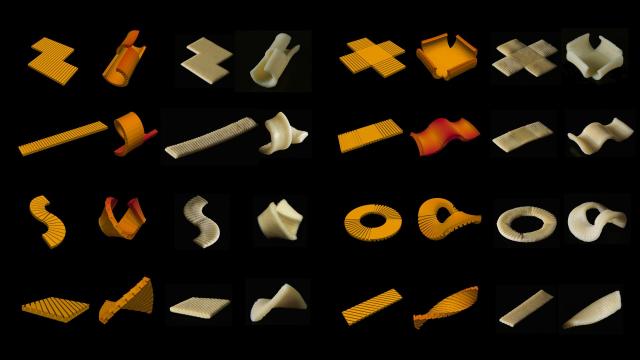Pasta boxes are bound by the constraints of their contents; the rigid stalks of spaghetti require different packaging than the wide coils of a good fusilli. Now, a team of researchers have developed flat pastas that turn into familiar shapes when cooked, with the goal of reducing packaging waste.
By incising grooves on a flat pasta made of standard semolina flour, the team was able to cook two dimensional pastas into three-dimensional shapes. Wavy pastas, boxy pastas, wing-shaped pastas, and ring-shaped pastas — a diversity of noodles could be made based on the grooves impressed onto the flat surfaces. The team’s research is published today in Science Advances.
“The groove side expands less than the smooth side, leading the pasta to morph into shape,” said co-author Teng Zhang, a materials scientist at Syracuse University who conducted modelling analysis on the pasta, in a Carnegie Mellon University press release.
Previously, the team worked with a gelatin-cellulose composite to understand the morphing behaviours, and we hoped that one day they could do the same with real pasta. This time around, they did. They used a combination of pasta, synthetic materials, and computer modelling to suss out the shapes that would be created by the various groove geometries.
By putting grooves on both sides of uncooked noodles, twisty and saddle-shaped pastas were also possible. The curvature models for the different pasta shapes were all derived from two design types, which were pressed onto the pasta by a machine in the team’s lab.
“We introduced two design guidelines, one based on parallel groove lines that will form a uniform bending curvature; the other is based on radial groove lines that will form a cone,” said co-author Lining Yao, director of the Morphing Matter Lab at Carnegie Mellon University, in an email. “Then, if you combine these primitives, you can get different shapes like cylinders, boxes, etc.”
The pastas to come out of the lab are only the latest material to be put on trial by Yao’s lab, which explores how various materials (foods and otherwise) can change shape. The team suggests that packing flat pastas that transform into larger-volume shapes only when cooked will reduce the amount of packaging necessary to move the millions of tons of pasta consumed each year, according to International Pasta Organisation numbers.

The team estimates such food designs could reduce the amount of packaging needed for a pasta box by 59% to 86%, based on calculations they did on the volumes of different pasta boxes. Shipping and transportation costs could also be reduced. Every little bit helps, though reducing pollution from pasta boxes is a much smaller concern than reining in Big Oil.
Nevertheless, these morphing pastas are a sight to behold. They writhe under the hot water and, instead of becoming floppy versions of their ordinary forms, seem to bloom like flower buds in sunlight.
More: This Futuristic Shape-Changing Pasta Was Inspired by Star Wars
